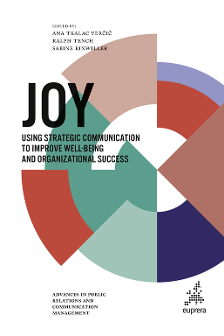
Index
ISBN: 978-1-80043-241-3, eISBN: 978-1-80043-240-6
ISSN: 2398-3914
Publication date: 26 November 2020
Citation
(2020), "Index", Verčič, A.T., Tench, R. and Einwiller, S. (Ed.) Joy (Advances in Public Relations and Communication Management, Vol. 5), Emerald Publishing Limited, Leeds, pp. 223-229. https://doi.org/10.1108/S2398-391420200000005015
Publisher
:Emerald Publishing Limited
Copyright © 2021 Emerald Publishing Limited
INDEX
- Prelims
- Part I Strategic Communication and Organizational Goals
- Love Wins: A Love Lens Approach to Cultivation of Organization–Stakeholder Relationships
- Values-based Communication: A New Impulse to Communication Effectiveness
- Outside-in- versus Inside-out-content: Introducing a New Approach to the Origins of Content in Strategic Communication
- Quantifying Organizational Trust on Twitter: A Communication Perspective
- Part II Internal and Employee Communication
- Internal Communication and Employee Engagement as the Key Prerequisites of Happiness
- Communicative Leadership on Internal Social Media: A Way to Employee Engagement?
- Employees as Corporate Ambassadors: A Qualitative Study Exploring the Perceived Benefits and Challenges from Three Perspectives
- Part III Joyfully Practising Communication
- The Pursuit of Happiness in PR: Joy, Satisfaction and Motivation during Working as Communication Manager on Purposeful Cases
- The Dancing CEO. New Perspectives on the Leader: Performer, Chief Happiness Officer or Seducer?
- Incorporating Cultural Diversity, Nation Building and Social Cohesion When Teaching Communication and Relationship Management
- Using Education as a Strategic Communication Tool – A Case Study of Raising Financial Literacy and Voluntary Pension Fund Promotion
- Health Professionals' Communication Competences Decide Patients' Well-being: Proposal for a Communication Model
- Index